A unique wardrobe detail that emphasizes the sophistication and elegance of every girl is a culotte skirt or, in other words, culottes. If not every representative of the fair sex can afford to wear regular trousers, then culottes are a universal thing. They can be chosen for absolutely all types of figures. A culotte skirt easily hides flaws and emphasizes the advantages of plump, slender, large and neat women.
Patterns and sewing order of skirts trousers for women
Knowing the features of your figure and parameters, you can easily make a skirt-pants with your own hands at home. Patterns and sewing technologies for such a product are not difficult in practice, but in theory it is necessary to understand in detail. This article provides step-by-step analysis of patterns of simple cut culottes for plump women.
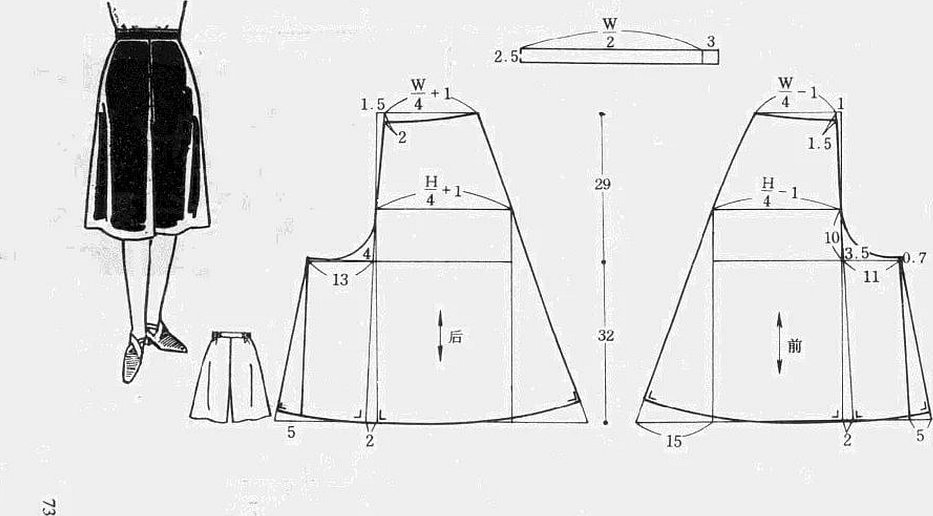
What is it
Culottes are cropped, wide-cut trousers. The length of the trousers varies from the knee to the ankle.
Important! Despite the fact that culottes are a universal item, you need to approach the choice of the model with caution. Incorrectly chosen style and accessories can make a woman's figure heavier, distort proportions, visually increase volume, and shorten the legs.
To keep your look fresh and harmonious, you need to know the following rules for choosing and wearing such trousers:
- Any stylist and designer will tell you that 50% of the winning look is made up of properly selected shoes. Culottes themselves shorten the length of the legs. And if tall women can afford to combine a skirt-pants with flat shoes, then short and plump women are categorically recommended to create an image with high heels. This will help maintain the proportions of the figure.
- It is necessary to pay special attention to the choice of material. Dense and voluminous fabrics visually steal proportions and height.
- All kinds of draperies, frills, flounces, a large number of folds, bows and other details have the same property. As you know, the devil is in the details. Therefore, it is better to give preference to culottes in the style of minimalism. Such skirts-pants combine elegance and simplicity, convenience and practicality in one bottle.
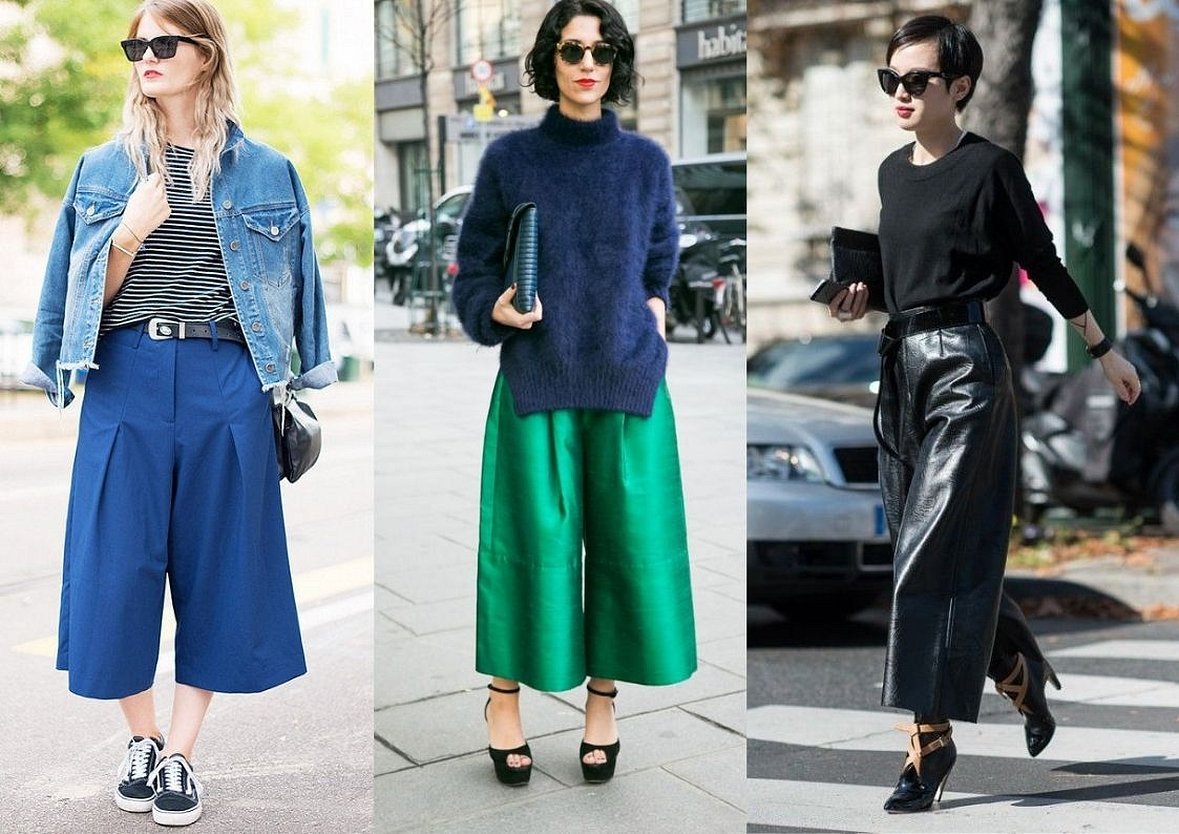
The history of the appearance of culottes is interesting. In the modern world, culottes are quite a popular item of women's wardrobe. But initially they were a distinctive item of men's clothing for aristocrats. They came to us from France in the 16th century, and initially looked like short pants that fastened below the knee.
Interesting! The term "sans-culottes" (french sans-without, cullott-short pants) representatives of the non-aristocratic class who wore long and wide trousers instead of short ones were called contemptuously.
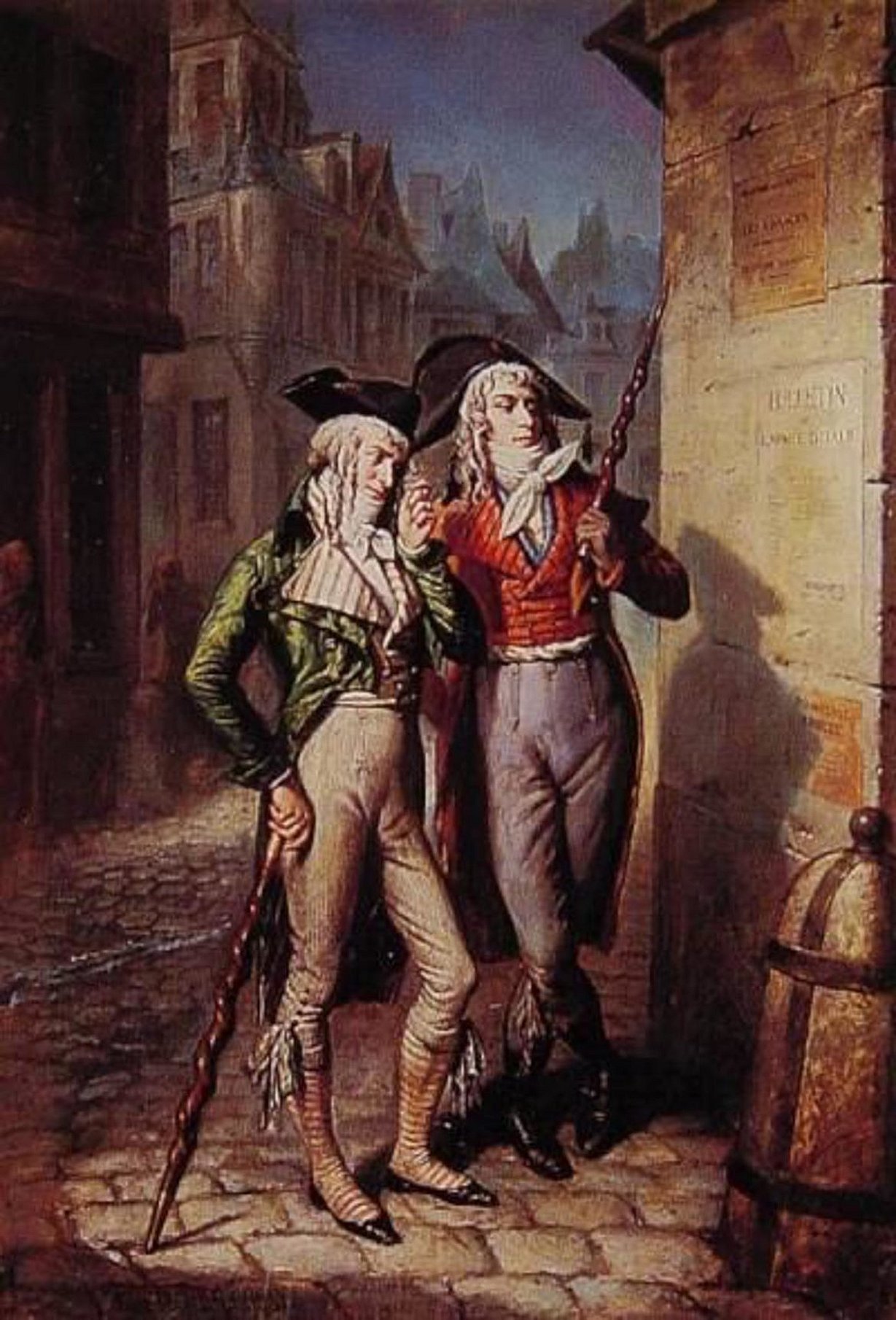
In the women's wardrobe, skirt-pants began to appear in the 19th century with women's passion for cycling, horse riding, and sports. Since certain rules of etiquette and lifestyle were established in the society of that time, women had to wear trousers under a skirt or hiding them with the hems of dresses. Or they wore transformer trousers, which looked like traditional skirts in the front and were comfortable legs in the back.
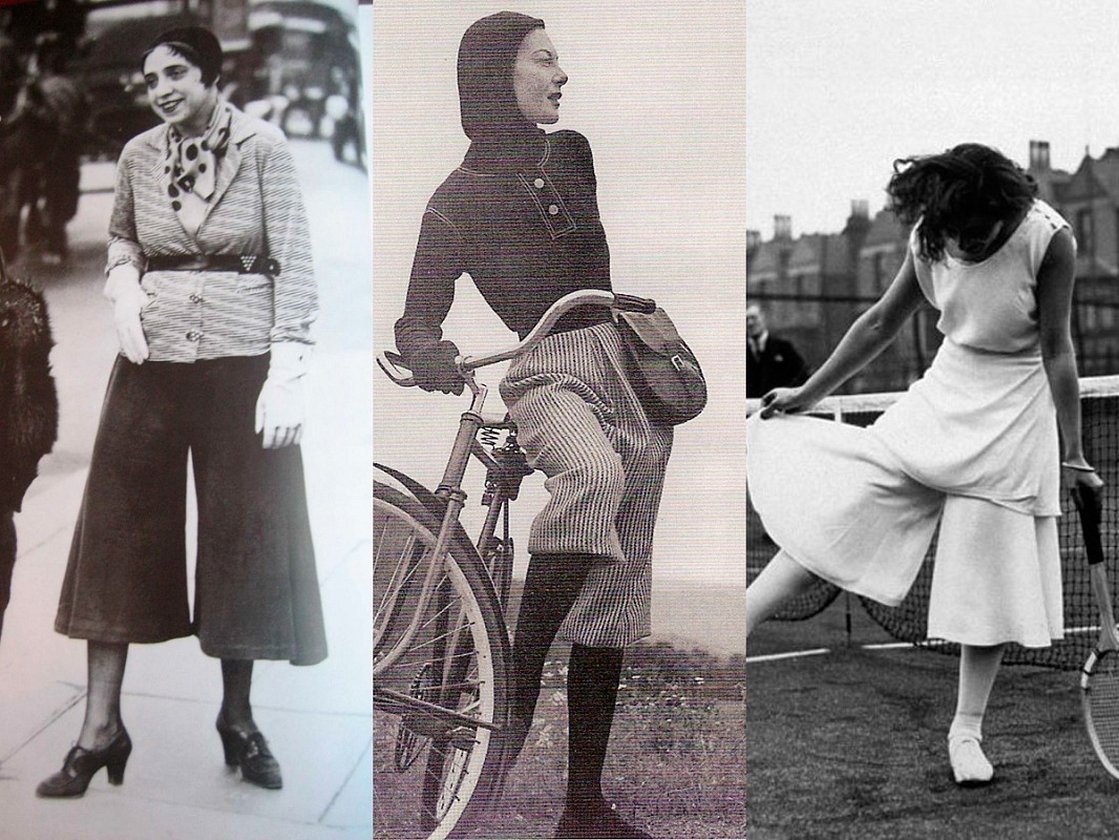
Women's society owes the appearance of culottes as we know them today to designer Elsa Schiaparelli. She created them for tennis player Lily de Alvarez for the Wimbledon tournament in 1931.
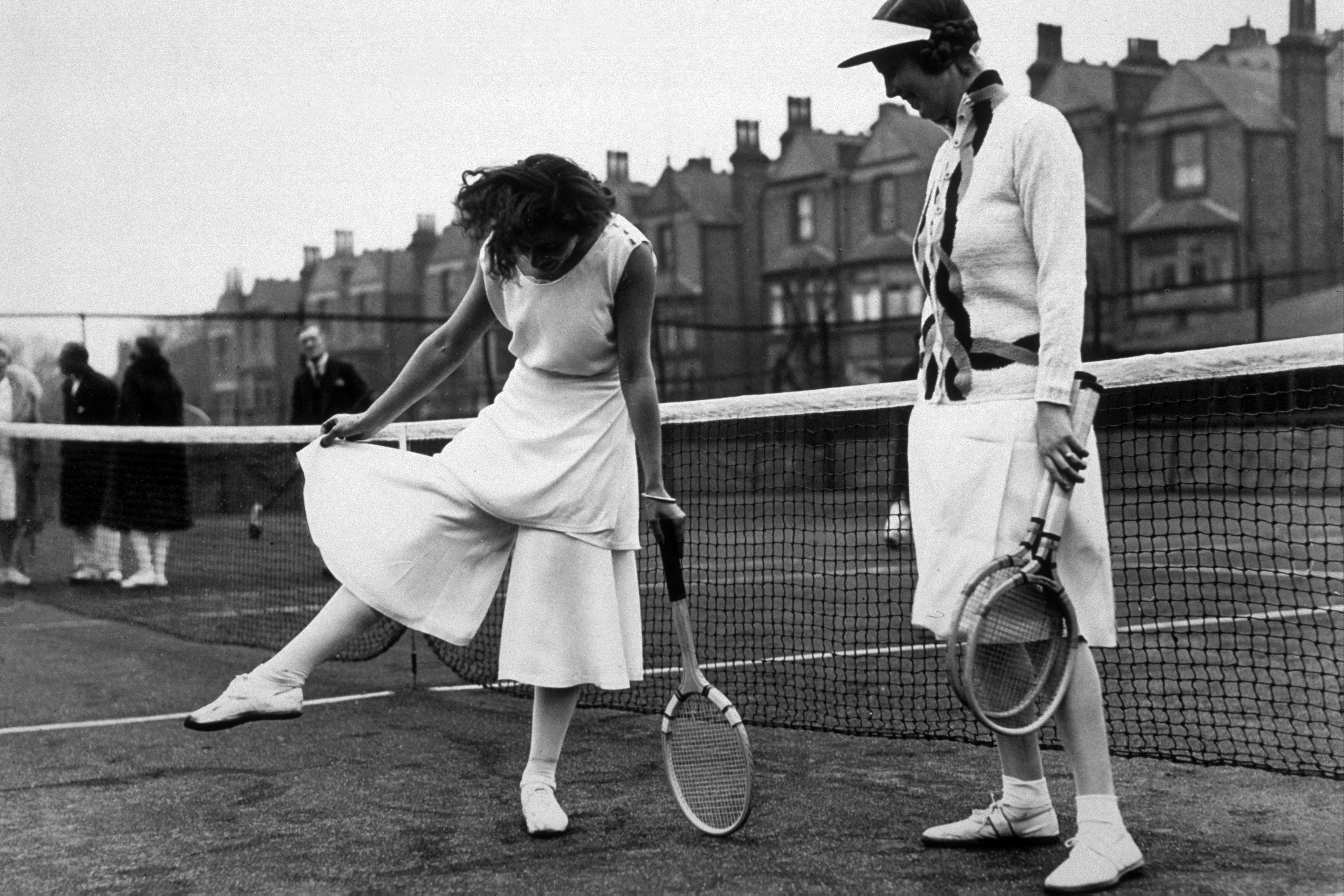
Popular models
In modern fashion, culottes can be found in absolutely different designs and combinations. This, like skirts, is a multifaceted item, suitable for everyday looks, and official outings, business meetings.
Culottes models differ in the length and width of the trousers, the material of execution. Depending on the purpose, fabrics of different density are selected.
Dense "solid" fabric is suitable for business meetings. Leather, denim, insulated knitwear are a good option for everyday outings, walks, including in the cold season. Light material in the form of silk, knitwear, translucent fabrics is chosen for summer trips, dates, meetings.
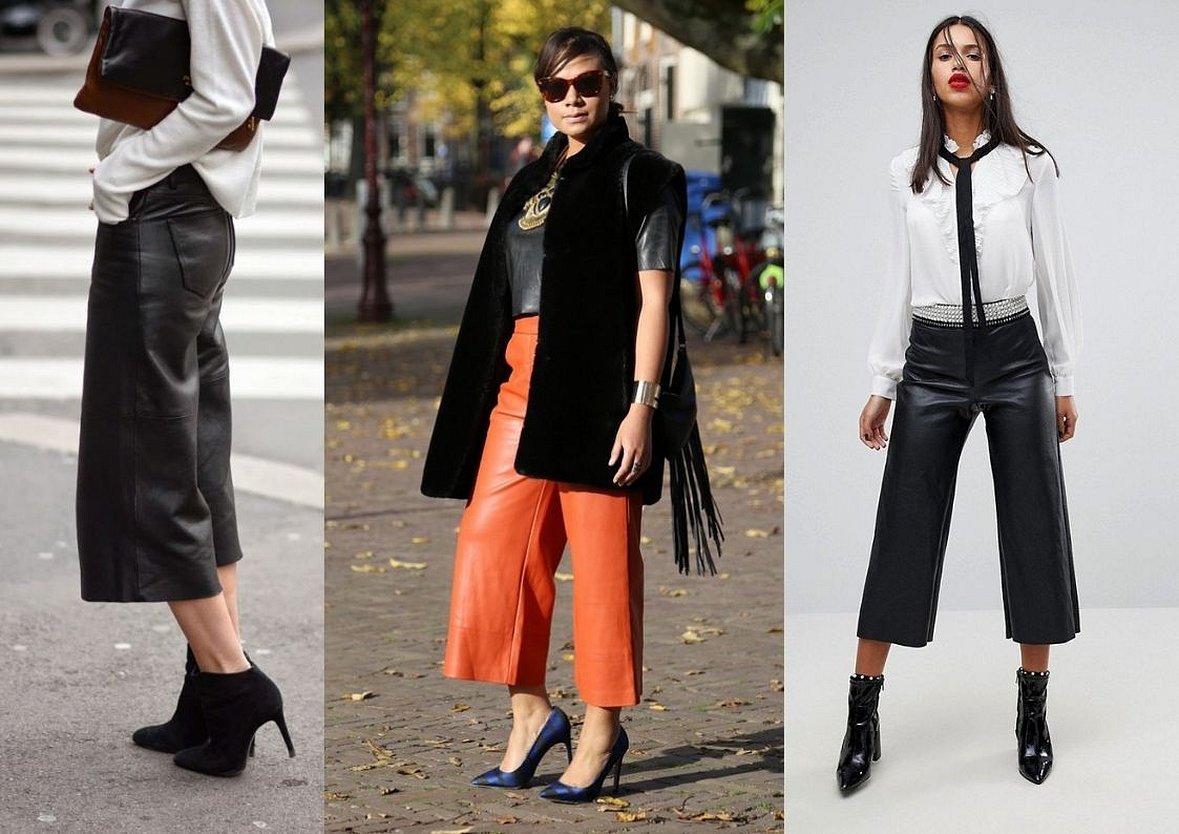
The length of the model is selected strictly individually for each girl's figure. There is a general principle, adhering to which you can choose "your" style: the length of the trouser leg should cover the widest part, leaving only the refined graceful part of the shin visible. At the same time, it is necessary to remember the waistline. A high waist visually emphasizes it, lengthening the legs.
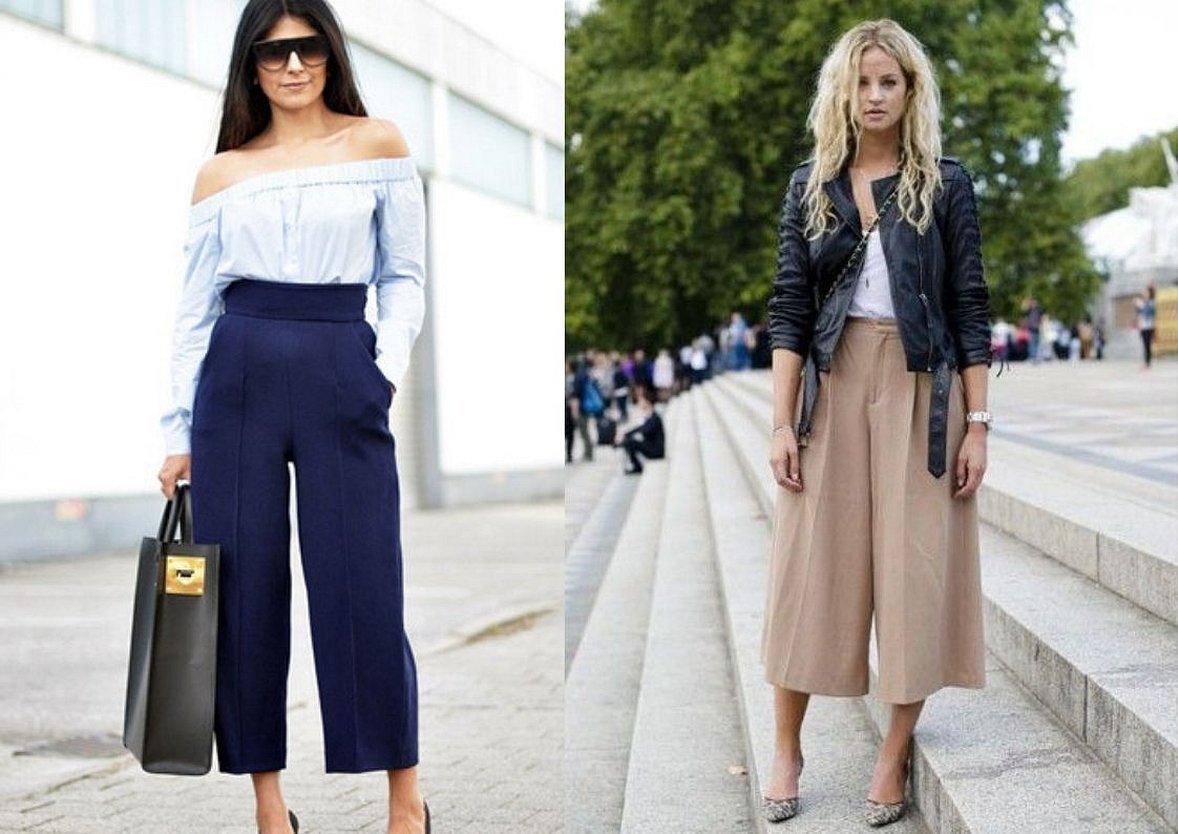
According to the width of the trousers, culottes can be straight cut, flared, loose wide. Owners of curvy shapes and breeches should be especially careful when choosing the width of trousers - wide styles can visually add even more volume and excess weight.
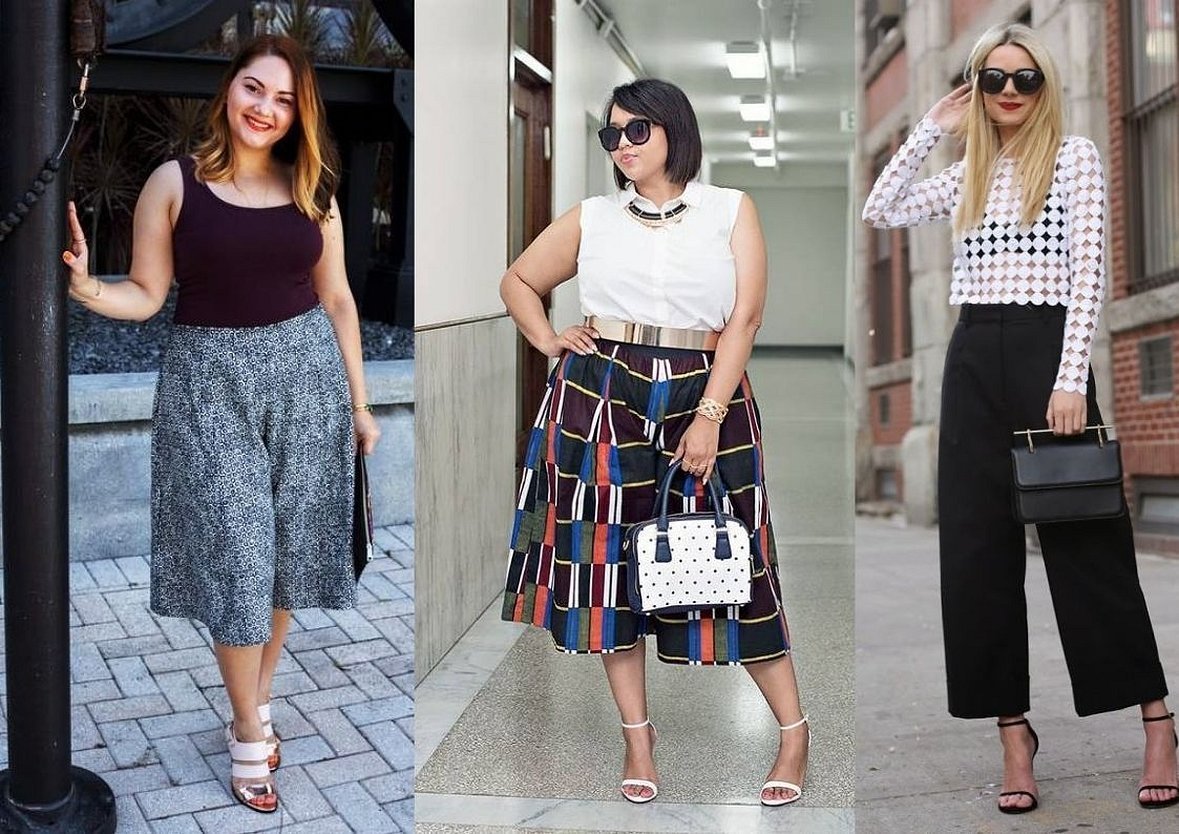
Principles of model construction
Perhaps after reading the instructions, you will get the impression that creating culottes with your own hands is difficult. In practice, everything is quite simple. A more visual representation can be obtained from this video from professional fashion designer Julia: https://www.youtube.com/watch?v=jJH0B7Gr-Js
The skirt trousers with a pattern are made according to the basic scheme. For this you will need: white chalk, measuring tape, ruler, scissors.
Before starting work, it is necessary to prepare the fabric. The width is selected based on the parameters of the figure, in particular, the hips. If elastic fabric is selected for making a skirt-pants, then 45 cm must be added to the hip volume. If non-elastic fabric is prepared for work, then 65 cm is added to the hip volume. The resulting amount is the width of the fabric required for work.

If the hip circumference is 100 cm and an elastic material is chosen, then the width should be 145 cm. By analogy, the width of the cut of a non-elastic shape is 165 cm.
- Divide the fabric in half, place the pieces one on top of the other, right sides facing inward.
- According to this technology, the culottes will have a slight flare. On one segment, it is necessary to divide the front and back surfaces of the culottes. This is done according to the following calculations:
Divide the hip circumference by half. Add to the resulting figure: for the back surface 27.5 cm, for the front 17.5 cm.
These figures are common for the entire back surface. Since there are 2 pieces of cuts prepared, each resulting calculation must be divided by half.
If the hip circumference is 100 cm, then the calculation of the back surface on each cut will be as follows: 50 cm + 27.5 cm = 77.5 cm. The width of the back surface on one cut is about 40 cm.
Calculation of the front surface: 50 cm + 17.5 cm = 67.5 cm. The width of the front surface for one leg is about 35 cm.
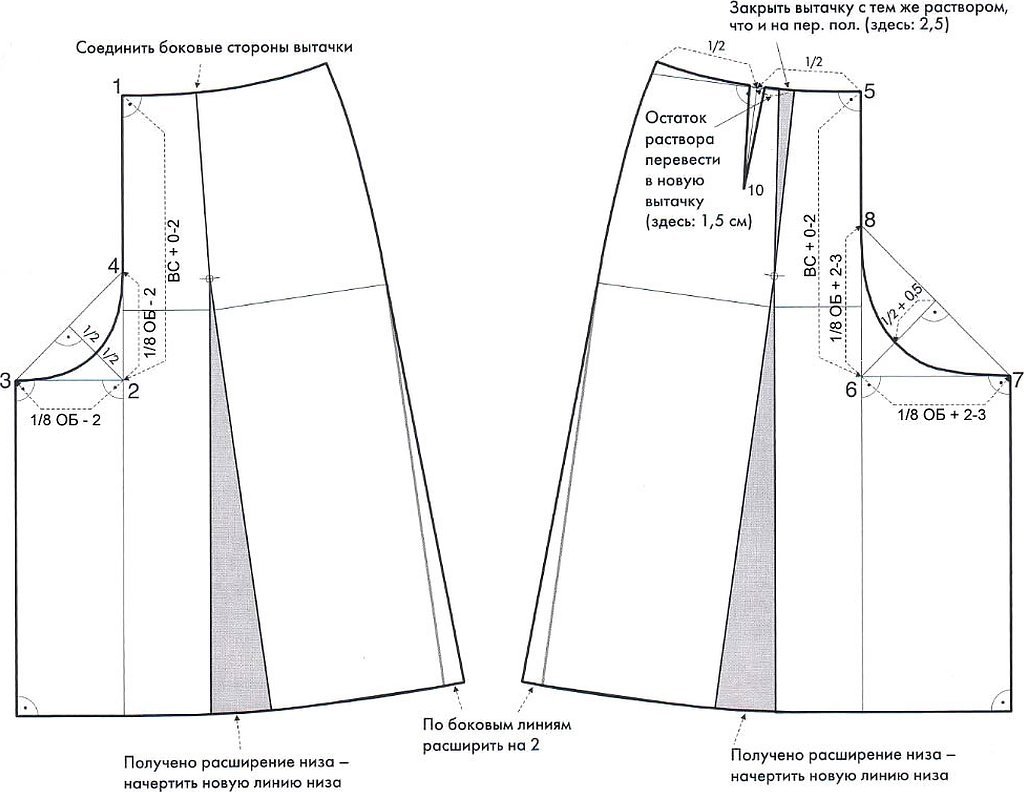
- Measure 40 cm from the edge of the fabric and use chalk to separate the front and back surfaces.
- On the "territory" of the back half, step back 5 cm from each edge and draw two straight lines. By analogy, mark the front half of the leg with two lines at a step back of 2.5 cm.
- The next task is to mark the rise height. Detailed instructions on how to do this are in the section "Taking measurements". From the top of the fabric, mark the required length and draw a straight line across the width.
- For a good fit of culottes, it is necessary to accurately calculate the back seam, the so-called "sit-on". From the leftmost drawn line of the back leg, mark 8-9 cm. From the lower left corner of the resulting rectangle, draw a "half-sun", bringing it into a line to the waist.
- Mark a distance of 3-4 cm from the waist for the elastic. Measure another 22 cm from it (the waist height may vary depending on the woman's size) + cut off another 2 cm from the edge of the right drawn line. Connect the resulting points with a diagonal line.
- Now measurements on the "territory" of the front surface of the trouser leg: from the outermost line on the right, measure 3 cm and draw a line, also rounding at the end. From the waist height, mark 5 cm on the right, 4 cm on the left and connect with the next line.
- On the area of the back surface, also mark 4 cm from the waist height and draw one line to the indentation point on the front surface, the other to the upper point of the thigh towards the back surface.
- The next stage is the flare. From the hip point marked above, draw a straight line to the lower extreme point of the trouser leg. Draw symmetrically from the opposite side. By analogy, do the same on the "front" area of the cut. The elementary pattern is almost ready.
- Additionally, you can add darts or folds, depending on the type of fabric.
Taking measurements
The creation of a drawing of the future skirt-shorts is necessary according to the following parameters:
- Length of product;
- Waist circumference;
- Hip circumference;
- Seat height.
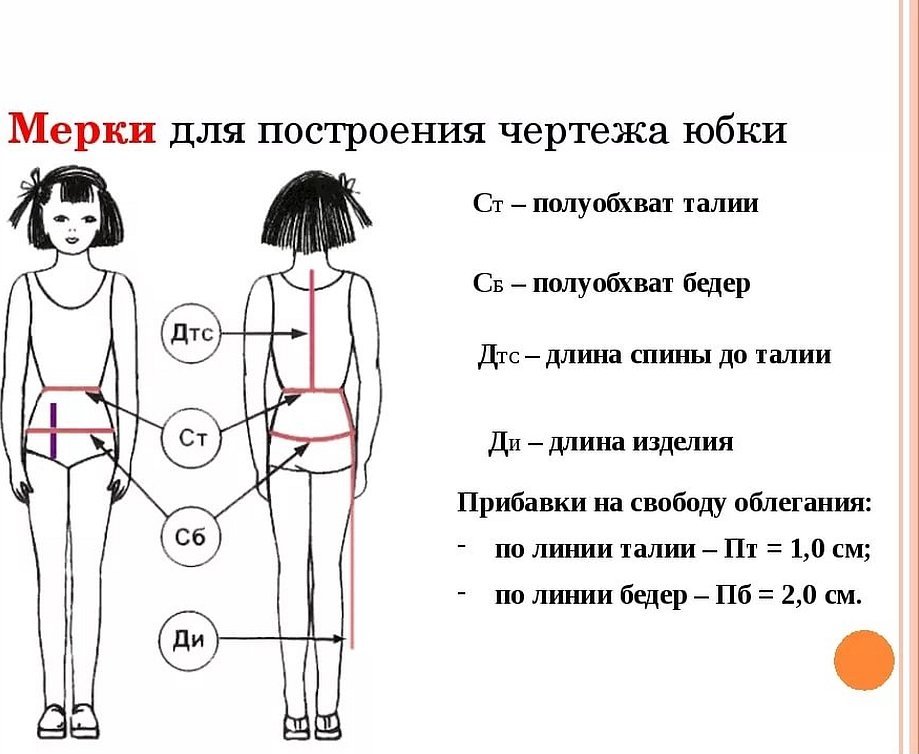
The length of the product is measured from the waistline. The lower point will be the desired length of the leg. As written above, ideal culottes should reveal a thin and graceful part of the leg.
To measure the seat height, you need to sit on a chair and measure the length from the horizontal plane of the chair to the waist line.
The hip circumference is measured using a ruler in a vertical position.
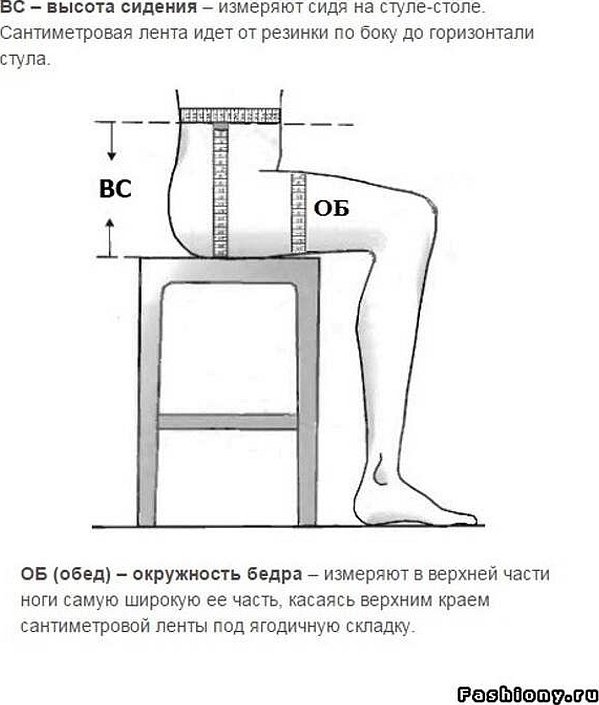
Sewing process
It was not difficult to make a pattern using the technology described above. Now it is necessary to proceed directly to sewing the skirt-pants:
- Using scissors, carefully cut out the shapes of the pieces that will need to be sewn together along the outer drawn outline.
- The first step is to shape the darts.
- Next, the front parts of the legs are placed on the back parts, with the cuts facing inward. The legs are sewn along the outer contour.
Important! The assembly principle is always the same. The sewing technology is carried out from top to bottom on both sides so that the trouser leg does not become skewed.
- After processing the outer seams, proceed to joining the trousers along the sciatic line.
- The final steps are threading the elastic and finishing the hem of the culotte.
After the culottes are ready, be sure to iron the inner seams and pull them out.
Using this basic pattern, you can create culottes for girls, as well as a pattern for skirts and shorts for plus size women.
The greater the increase in fabric width, the more "flare" can be measured.
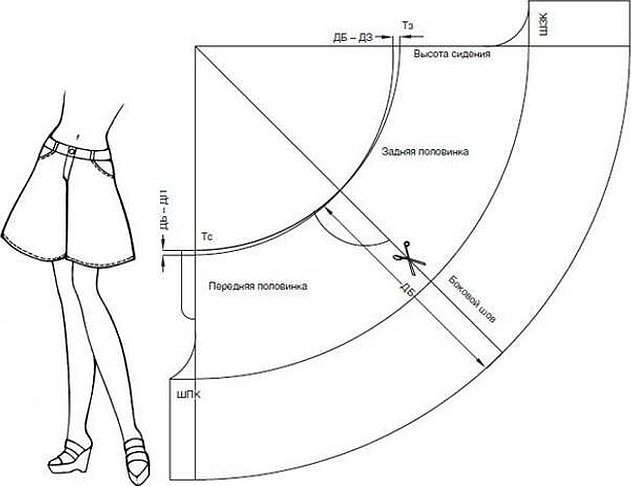
Having studied the process of creating a skirt-pants with a pattern according to the basic scheme in theory, you can easily cope with sewing culottes, which have been relevant for the third season in a row. This is the wardrobe detail that should be in the arsenal of stylish things of every fashionista.




